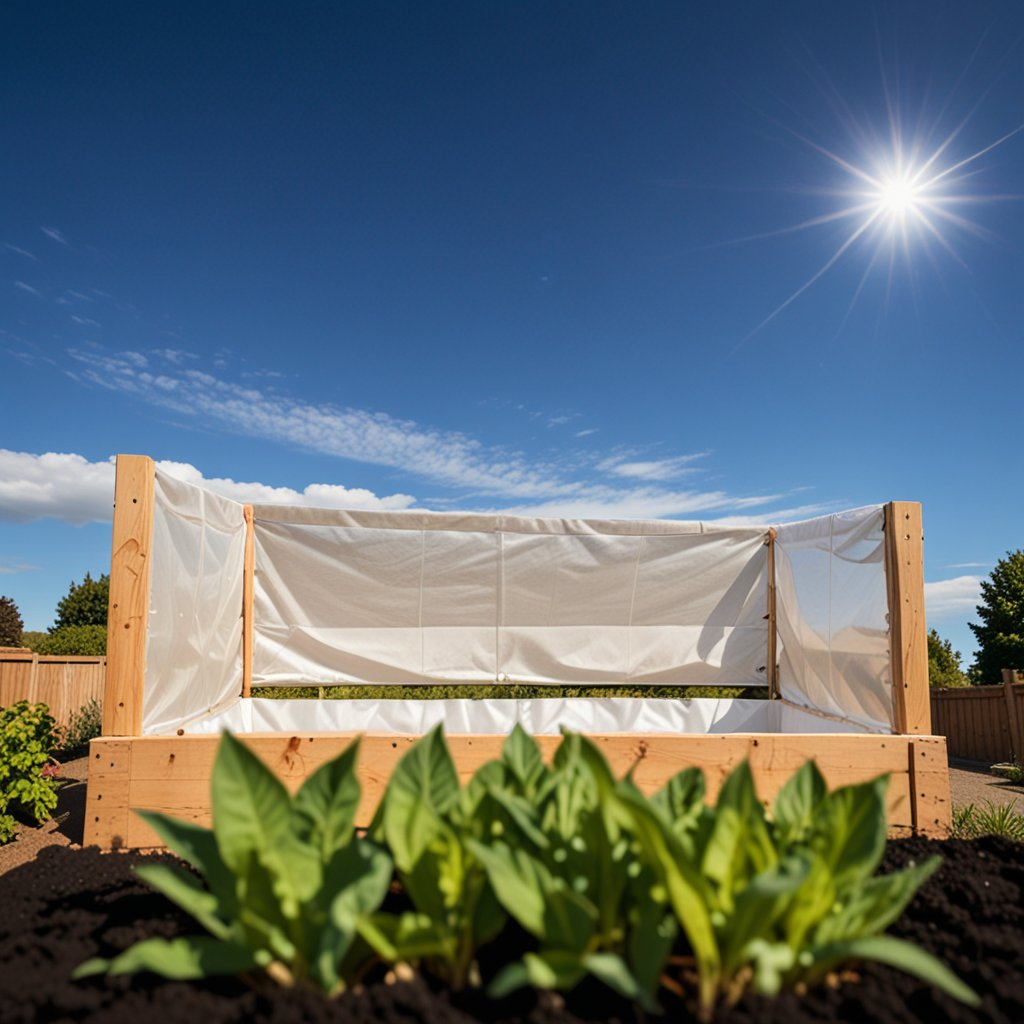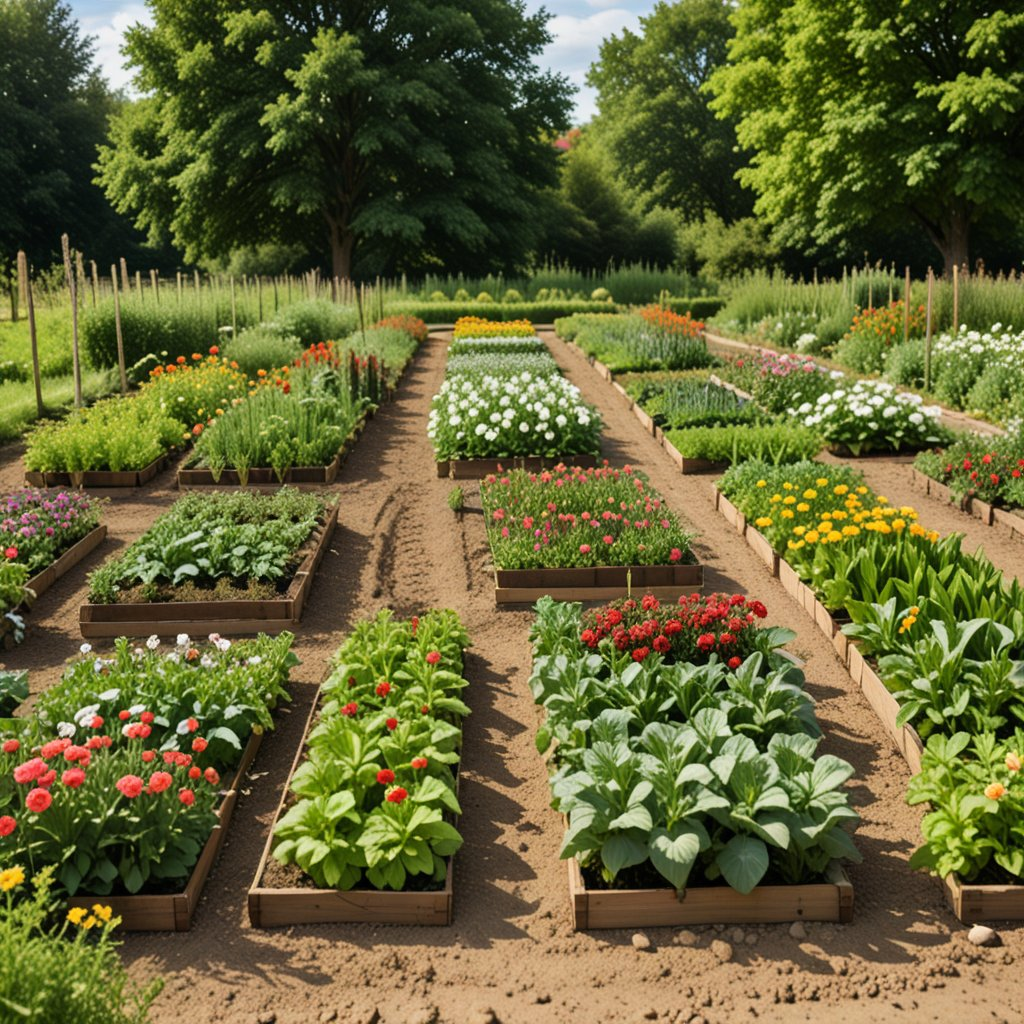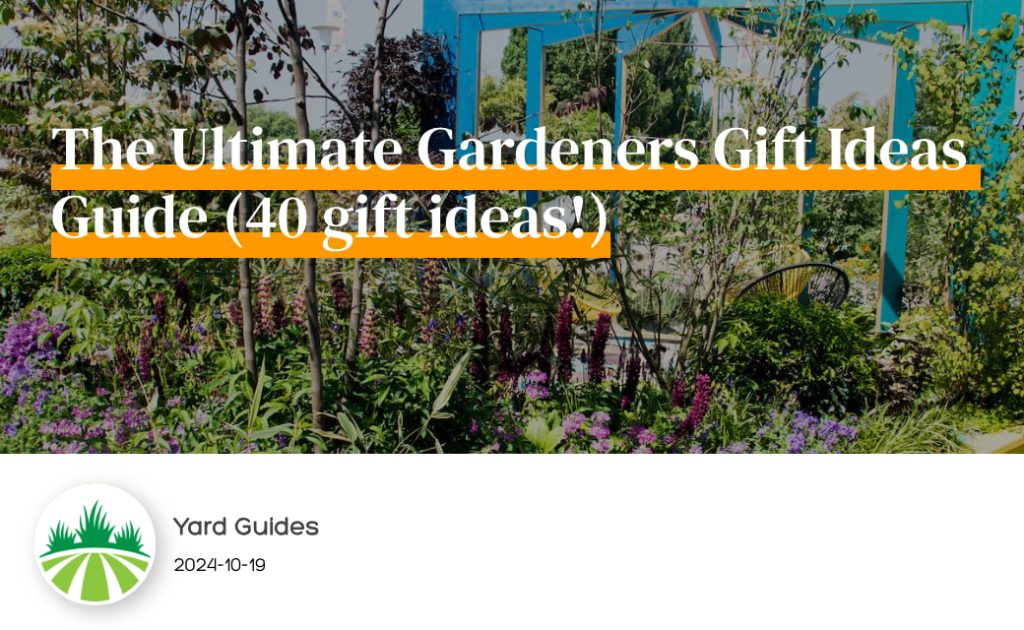Gardening is a rewarding hobby that brings joy and fresh produce. To line a raised bed is a popular choice for many gardeners. They offer better control over soil quality and drainage. But have you ever wondered about lining your raised bed? Lining a raised bed can significantly impact plant growth. It helps in maintaining soil health and preventing weeds. There are several materials you can use to line a raised bed. Each material has its own benefits and drawbacks. Choosing the right liner can enhance your garden’s productivity.
Landscape fabric is a common choice for lining raised beds. It allows water to pass through while blocking weeds. This makes it an effective weed barrier for raised garden beds.
Cardboard is another option for lining raised beds. It’s eco-friendly and decomposes over time, enriching the soil. This makes it a sustainable choice for environmentally conscious gardeners.
Plastic liners are also used, but they require careful consideration. They should be perforated to allow for drainage. This prevents waterlogging and ensures healthy plant growth.
Some gardeners wonder, “Can you line a raised garden bed with plastic?” The answer is yes, but with precautions. It’s important to weigh the pros and cons before deciding. Lining a raised bed can also deter pests and burrowing animals. This protects your plants and ensures a bountiful harvest. It’s a simple step that can make a big difference. The choice of liner can affect soil temperature. Plastic, for example, can increase warmth, benefiting certain plants. Consider your plant types when selecting a liner.

Ultimately, the decision to line a raised bed depends on various factors. These include garden location, soil quality, and personal preference. Understanding these factors can guide your choice. In this guide, we’ll explore smart ways to line a raised bed. We’ll discuss materials, benefits, and installation tips. Whether you’re a novice or experienced gardener, this guide is for you. Let’s dive into the world of raised bed garden lining. Discover how to optimize your garden for better plant growth. With the right liner, your garden can thrive like never before.
Why Line a Raised Bed?
Lining a raised bed is not just an optional task. It plays a crucial role in garden maintenance. Understanding the reasons can help you achieve the best plant growth.
One of the main reasons to line a raised bed is to improve drainage. Good drainage prevents water from pooling, which can cause root rot. This ensures plants receive adequate moisture without drowning.
Lining a raised bed also minimizes soil erosion. Erosion can wash away essential nutrients from the soil. With a liner in place, you preserve these nutrients for your plants.
Weeds are a gardener’s enemy. By lining your bed, you create a strong weed barrier for the raised garden bed. This limits the weed growth, reducing competition for resources.
Moreover, a liner can extend the life of the bed itself. This is particularly important for wooden beds. Keeping moisture away from the wood prevents rot and decay.
Here are some compelling reasons to line a raised bed:
- Enhances drainage and prevents waterlogging
- Reduces soil erosion and nutrient loss
- Acts as a weed barrier, reducing weed growth
- Protects the bed structure from rot and decay
- Deters pests and burrowing animals
Some gardeners ask, “Do I need to line a raised bed?” The answer often depends on individual needs. However, many find the benefits worthwhile.
While it’s not always necessary, lining can offer a variety of advantages. Thoughtful lining transforms your garden into an efficient, productive space.
Benefits of Lining a Raised Garden Bed
Lining a raised garden bed can dramatically boost the health of your plants. It offers several distinct benefits that enhance plant growth. Let’s delve into the advantages of using a liner.
First, a liner helps retain soil nutrients. As water drains, essential nutrients are often washed away. A well-chosen liner prevents this, enriching the soil for plant growth.
Another advantage is improved temperature regulation. Some liners, like plastic, can retain heat. This is beneficial during colder months, fostering a warmer environment for growing.
Weed control is a significant benefit of lining raised beds. A liner creates a barrier against weeds. This reduces the amount of time spent on weeding.
- Retains soil nutrients and enhances growth
- Helps regulate soil temperature
- Creates an effective barrier against weed growth
- Protects plants from pests and burrowers
- Extends the lifespan of wooden structures
Additionally, certain liners can deter pests and burrowing animals. They provide a physical barrier, keeping these invaders out. This protects your plants and ensures a more fruitful harvest.
Ultimately, these benefits make gardening more rewarding. Lining raised beds transforms challenges into manageable tasks. Your garden can become more productive with the right lining.
Common Misconceptions About Lining
There are several common misconceptions about lining raised beds. Understanding these can help you make informed decisions. Let’s debunk some myths surrounding garden bed lining.
One belief is that all liners are bad for plants. This myth stems from the use of toxic materials. Choosing non-toxic liners can safely improve garden conditions.
Some gardeners think lining always prevents proper drainage. While some materials can cause waterlogging, others are designed to drain effectively. Proper installation is key to ensuring good drainage.
Here are some misconceptions to be aware of:
- All liners harm plant growth
- Lining blocks drainage and causes water issues
- Lining is unnecessary for non-wooden beds
- Only plastic can be used as a liner
- Liners are complex to install
Many believe that liners are unnecessary for non-wooden beds. However, a liner can still offer benefits, like weed control. It’s not just about preserving wooden structures.
Another misconception is that only plastic can be used. In reality, materials like cardboard and landscape fabric are popular. They offer sustainable alternatives to plastic liners.
Lastly, some feel liners are difficult to install. While some effort is involved, many liner options are user-friendly. This makes the process accessible for gardeners of all experience levels.
By understanding these misconceptions, you can better appreciate the value of lining. It helps you make choices that benefit your garden’s growth and health.
Materials to Consider for Lining Raised Beds
Choosing the right material for lining raised beds is crucial. Each option has unique benefits and drawbacks. Your choice will depend on your gardening goals and preferences.
Some popular materials include landscape fabric, plastic liners, cardboard, and weed barriers. These differ in durability, environmental impact, and cost. Below, we’ll explore each of these materials in detail.
One should consider environmental factors when selecting a liner. Some materials can withstand harsh weather better than others. Durability is key to reducing frequent replacements.
In addition, the cost is an important factor for many gardeners. While budget options exist, investing in quality materials can offer long-term savings. Durable materials often last longer and perform better.
Natural options like straw or leaves could also be considered. These are temporary but sustainable. They decompose over time, enriching the soil with organic matter.
Think about the ease of installation as well. Some materials are more user-friendly and require less effort. This can make the lining process smooth and enjoyable for beginners.
Before deciding, weigh the pros and cons of each material. Here’s a list to guide your choice:
- Durability: How long will the material last?
- Cost: Is it budget-friendly or more of an investment?
- Environmental Impact: Is it sustainable?
- Installation Ease: How simple is the installation process?
- Effectiveness: How well does it perform as a liner?
By considering these factors, you can choose a material that suits your needs best.
Landscape Fabric
Landscape fabric is a favored choice among gardeners for lining raised beds. It offers a balance of durability and permeability, allowing water to flow while blocking weeds.
This fabric is made from woven or non-woven polypropylene. It’s known for its long life, often lasting several seasons. Its breathability ensures that plants receive adequate moisture without waterlogging.
A primary advantage of landscape fabric is its effectiveness in weed control. The material forms a tough barrier that inhibits weed growth, reducing gardening chores significantly.
Moreover, landscape fabric is easy to install. It requires only basic tools and can be cut to fit beds of any size. It’s a time-saving option for gardeners looking to improve their beds quickly.
Key advantages of using landscape fabric include:
- Durability: Provides long-lasting protection
- Weed Control: Highly effective at blocking weeds
- Ease of Use: Simple to cut and install
- Water Permeability: Allows excess water to drain
- Multi-Season Use: Stands up to several gardening cycles
While landscape fabric is effective, it does come at a price. It is slightly more expensive than other options. However, its durability and performance make it a worthwhile investment for many.
Plastic Liners
Plastic liners are another common choice for raised beds. They are typically made from polyethylene and are known for their durability and flexibility. This material can dramatically affect soil warmth, which is beneficial in cooler climates.
The primary benefit of plastic liners is their ability to retain heat. This can extend the growing season by keeping soil warmer for a longer period. Gardeners in colder regions find this particularly advantageous.
Plastic liners are also great at preventing soil erosion. Their impermeable nature ensures minimal nutrient loss, helping plants thrive. However, it’s crucial to perforate the plastic to prevent waterlogging.
Pros of using plastic liners include:
- Heat Retention: Warms the soil in cold months
- Durability: Resistant to most environmental challenges
- Cost-Effective: Affordable for many gardeners
- Erosion Prevention: Stops valuable soil from washing away
- Flexibility: Easily shaped for custom fits
Despite these benefits, some gardeners worry about its environmental impact. Choosing non-toxic and food-safe plastics is essential when growing edibles. Furthermore, installation must ensure proper drainage to avoid root rot.
Cardboard
For those seeking an eco-friendly option, cardboard is a great choice. It’s a natural material that gradually decomposes, enriching your soil with organic matter. Cardboard is often free, making it a budget-friendly option for many gardeners.
Cardboard works well as a weed barrier. It blocks light, which prevents weed germination. Over time, it breaks down and integrates into the soil, improving soil structure.
The temporary nature of cardboard can be both an advantage and a disadvantage. It requires replacement as it decomposes, but this also means it adds nutrients organically. So, while it lacks long-term durability, its eco-benefits are significant.
Cardboard’s benefits include:
- Eco-Friendly: Biodegradable and adds organic matter
- Budget-Friendly: Often available at little to no cost
- Weed Control: Effectively blocks sunlight to deter weeds
- Soil Enrichment: Breaks down to improve soil health
- Easy to Obtain: Readily available materials
Installation is straightforward. Simply lay a few layers of cardboard at the raised bed bottom. It should overlap to ensure thorough coverage. However, be prepared for regular maintenance as the material degrades.
Weed Barriers
Weed barriers are specifically designed to stop weeds in their tracks. These are usually made from materials like woven plastic or fabric. A weed barrier for raised garden beds allows water to pass through while blocking pesky weeds.
The durability of weed barriers makes them a top choice for weed control. They are more robust than standard landscape fabric, providing long-lasting weed protection. However, this may come at a higher cost.
Weed barriers are great for keeping maintenance low. By minimizing weed growth, you can focus more on caring for your plants rather than constant weeding. Their installation is simple and often involves rolling them out over the soil.
Advantages include:
- Superior Weed Control: Specialized design for preventing weed growth
- Durability: Tougher than basic fabric options
- Low Maintenance: Reduces time spent on weeding tasks
- Water Permeability: Allows essential hydration while blocking weeds
- Customizable Sizes: Can be cut to fit any garden bed size
In conclusion, while weed barriers excel at controlling weeds, they are generally more costly. However, their long-term performance may justify the initial investment, especially for avid gardeners.
How to Line a Raised Bed Effectively
Lining a raised bed effectively requires planning and careful execution. The right lining can benefit your plants immensely. Here’s how you can achieve the best results.
Start by choosing the right material for your garden’s needs. Consider climate, plant types, and available materials. Each factor influences the lining’s success.
Before lining, prepare the area by clearing debris and leveling the ground. A smooth surface ensures the liner fits snugly, preventing gaps and overlaps. This foundation is vital for optimal functionality.
Once prepared, cut your selected liner material to fit. Precision is important to cover the bed’s dimensions adequately. This prevents unwanted openings where weeds might enter or soil might escape.
Installing the liner properly involves laying it across the bed base. Make sure it extends slightly up the sides. This extension helps keep the soil and liner in place.
Here’s a guideline to ensure effectiveness:
- Clear the Area: Remove rocks and debris.
- Measure and Cut: Tailor the liner to your bed’s size.
- Secure the Edges: Anchor with pegs or bury edges in soil.
- Leave Space: Ensure the liner allows for drainage.
- Inspect Regularly: Check for wear and replace as needed.
Monitoring the liner is an ongoing task. Over time, materials may degrade or shift. Addressing issues early ensures your lining continues to protect your bed effectively.
Step-by-Step Instructions
Preparing to line your raised bed? Follow these steps for a foolproof installation. The process is straightforward with a little planning.
Step 1: Gather Supplies
Select your liner and gather necessary tools like scissors and pegs. Having everything at hand saves time during the installation process.
Step 2: Prepare the Bed
Remove existing weeds and level the ground. A smooth surface is key for lining success. Pay attention to detail to avoid future complications.
Step 3: Measure and Cut
Accurate measurements are crucial. Use a tape measure for precise dimensions. Cut the liner material to fit with minimal waste.
Step 4: Position the Liner
Place the liner evenly across the bed. Ensure edges reach the sides to prevent soil seepage. Adjust as needed for a perfect fit.
Step 5: Secure the Liner
Anchor the liner in place using stakes or soil. This keeps it secure against wind and weather. Properly secured edges prevent material shifting.
Step 6: Check for Overlaps
Ensure layers overlap slightly to prevent gaps. These can invite weeds and pests. Overlaps also reinforce the liner’s durability.
Step 7: Final Inspection
Review your work. Ensure the liner is taut and well-positioned. Correct any misalignments immediately for the best outcome.
This checklist simplifies the lining process:
- Gather tools and materials before starting
- Level and clear the bed surface
- Measure twice, cut once for the liner
- Secure the liner to prevent movement
- Overlap layers to block gaps
- Inspect the liner periodically for maintenance
Following these steps ensures your bed is lined effectively for maximum plant growth.
Tips for Proper Installation
Proper installation ensures your lining works efficiently. A few simple tips can enhance the effectiveness of your liner.
Ensure Good Drainage
Proper drainage prevents waterlogging. Ensure your liner does not trap water, which can harm roots. Some materials require extra perforations to facilitate water flow.
Avoid Toxins
When selecting liners, ensure materials are non-toxic. This is vital if you grow food crops. Certain plastics can leach chemicals, affecting plant health.
Reinforce Edges
Edges are prone to wear and tear. Reinforce them using extra pegs or by embedding them in soil. This enhances liner longevity and efficiency.
Mind the Weather
Extreme weather can affect liners, especially in exposed areas. Secure your liners well against wind and rain. Consider weighted edges during installation.
Additional tips to remember:
- Test drainage before soil application
- Use food-safe materials for vegetable beds
- Consider local climate for weather-resistant materials
- Reinforce weak spots to maintain durability
By implementing these strategies, you ensure your raised bed is lined effectively, promoting optimal plant growth and soil preservation.
Should I Line My Raised Garden Bed with Plastic?
Using plastic liners in your raised garden bed is a frequent choice among gardeners. However, understanding when and why to use plastic is crucial. The decision should hinge on your garden’s specific needs and conditions.
Plastic liners can offer significant benefits. They are generally durable and resist rot, extending the life of your raised bed. Plastic can also act as a barrier, preventing pesky weeds and insects from sneaking into your soil.
But before deciding, consider the potential downsides. Plastic has been known to disrupt drainage if not properly perforated. This can lead to water pooling at the bottom of your bed, which is harmful to plant roots.
Another consideration is environmental impact. Not all plastics are eco-friendly, and the sustainability of your gardening practices matters. Additionally, some plastics may leach harmful chemicals, particularly if growing edibles.
To determine if plastic is right for your bed, contemplate these aspects:
- Durability Needs: Do your beds require long-lasting materials?
- Drainage Concerns: Can you ensure proper water flow?
- Environmental Impact: Is sustainability a priority for you?
- Health Risks: Are the plastics food-safe for edibles?
Ultimately, the decision should balance your garden’s practical needs with environmental considerations and crop safety.
Pros and Cons
The pros and cons of using plastic liners offer a clear picture of their impact. Understanding both sides will aid in making an informed decision.
Pros:
- Longevity: Plastic liners typically last longer than organic materials.
- Weed Barrier: Effectively prevents weeds from invading your garden space.
- Root Protection: Shields plant roots from external pests and invasive plant species.
Cons:
- Drainage Issues: Poorly perforated plastic can impede water flow.
- Chemical Leaching: Some plastics may release harmful substances into the soil.
- Environmental Impact: Not a sustainable option due to plastic pollution.
Balancing these elements is essential. The benefits can enhance your garden if drainage is addressed and sustainable, food-safe plastic is used.
List of considerations when using plastic liners:
- Ensure perforations for optimal drainage
- Verify plastics are safe for growing food
- Weigh longevity against environmental impact
Assessing these aspects allows for an informed choice tailored to your specific gardening needs.
Alternatives to Plastic Liners
If plastic isn’t right for your garden, several viable alternatives exist. Each offers unique benefits that cater to various gardening needs.
Landscape Fabric is a popular choice. It provides excellent weed control while allowing water and nutrients to pass freely. This fabric is more eco-friendly compared to plastic.
Another alternative is cardboard. Cardboard breaks down over time, enriching the soil with organic matter. It’s also an effective barrier against weeds and is sustainable.
For those interested in natural materials, consider straw or leaves. These options provide temporary solutions that improve soil quality as they decompose, feeding the soil over time.
When selecting an alternative liner, think about these points:
- Eco-Friendliness: Does the material benefit the environment?
- Decomposition Rate: Will it break down and feed your soil?
- Water and Nutrient Flow: Does it allow for proper root hydration and nutrient uptake?
Choosing a liner aligned with your values and garden conditions can optimize your garden’s health while supporting the environment.
Common Questions About Lining Raised Beds
Lining raised garden beds stirs up many questions for gardeners. A well-informed approach helps in making the best decision for your garden. Clarity on common concerns can simplify the process.
One frequent question is whether lining is always necessary. Lining can enhance growth and protect soil but isn’t mandatory in all cases. Knowing your specific garden environment helps in deciding the need.
Gardeners often wonder what materials make the best liner. The answer depends on various factors, including the type of plants grown and budget constraints. Diverse options mean there’s likely a perfect fit for everyone.
Some people ask about the role of liners in pest control. Liners can deter pests but aren’t foolproof. Complementing liners with other pest control methods increases effectiveness.
Home gardeners often want to know how liners impact soil health. The right liner can keep nutrients from leaching while enhancing soil structure. It’s essential to balance benefits with any potential downsides like drainage issues.
Key Questions to Consider:
- Is a liner necessary for my specific plants?
- What materials suit my environmental preferences?
- Will the liner be effective against local pests?
- How will it impact soil drainage and nutrient retention?
These questions guide you in choosing the most suitable approach for your gardening needs.
Do I Need to Line My Raised Garden Bed?
Determining the necessity of a raised garden bed liner is essential. Various garden conditions influence whether a liner is needed or not. Not all raised beds require lining, but many benefit from it.
In cases where soil quality is low, lining is advantageous. A liner can prevent unwanted soil mixing and improve nutrient retention. However, in some gardens with excellent soil, lining may not be as crucial.
Consider local weed and pest prevalence. In high infestation areas, liners act as an additional barrier. Without these issues, a liner might serve more for soil health than as protection.
Climate conditions also affect the need for a liner. Cooler climates might benefit from plastic liners that warm the soil. Meanwhile, milder environments might not need extra heat retention.
Things to Evaluate:
- Is the existing soil quality high or low?
- What is the prevalence of weeds and pests?
- How do local climate conditions impact plant growth?
Deciding to line your raised garden bed should hinge on these individual factors. A tailored approach ensures your garden thrives.
What About Using a Weed Barrier?
A weed barrier in raised beds is a practical tool. It can significantly reduce weed growth, saving time and effort in the long run. A well-chosen barrier minimizes unwelcome intruders while allowing plants to flourish.
Different materials serve as effective weed barriers. Options range from natural solutions like straw to more engineered materials such as landscape fabric. Each offers varying levels of protection and ease of installation.
Selecting the right barrier depends on your garden conditions and personal preferences. Some barriers offer additional benefits like nutrient content or environmental sustainability, which can tilt the decision.
Despite their effectiveness, weed barriers require proper installation. Ensuring adequate coverage and securing edges prevents weeds from creeping in. Regular inspection and maintenance help uphold their functionality.
Considerations for Weed Barriers:
- Which materials balance effectiveness and environmental impact?
- Is installation straightforward and maintenance manageable?
- Does the barrier contribute additional benefits like nutrients?
Answering these questions helps in choosing the best weed barrier option. With the right selection, maintaining a weed-free raised bed becomes less of a chore.
Conclusion
Lining a raised bed can vastly improve your gardening results. With diverse materials and methods available, gardeners can optimize their setups according to specific needs. The choice of lining impacts plant growth, soil health, and pest control.
Decide based on factors like soil quality, climate, and plant type. Whether using cardboard, plastic, or fabric, the right liner can enhance nutrient retention and prevent weeds. Raised beds become more efficient and effective with the right approach.
A well-lined raised bed offers benefits like reduced maintenance and improved plant yields. Regular assessment and liner maintenance ensure long-term success. Embracing these strategies fosters a thriving garden that meets your goals and keeps plants healthy.


